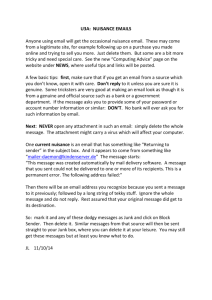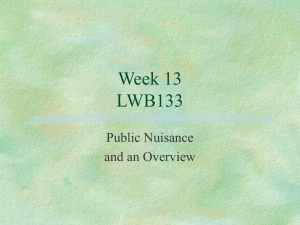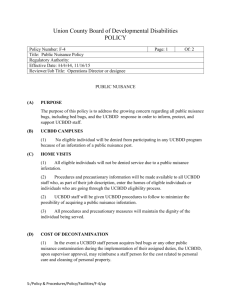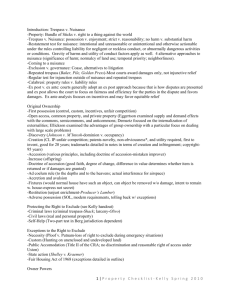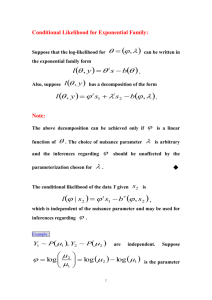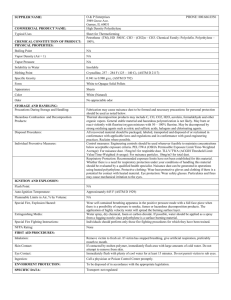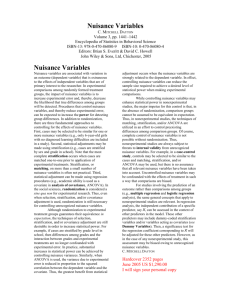Junk Ordinance - Lanesboro.com
advertisement
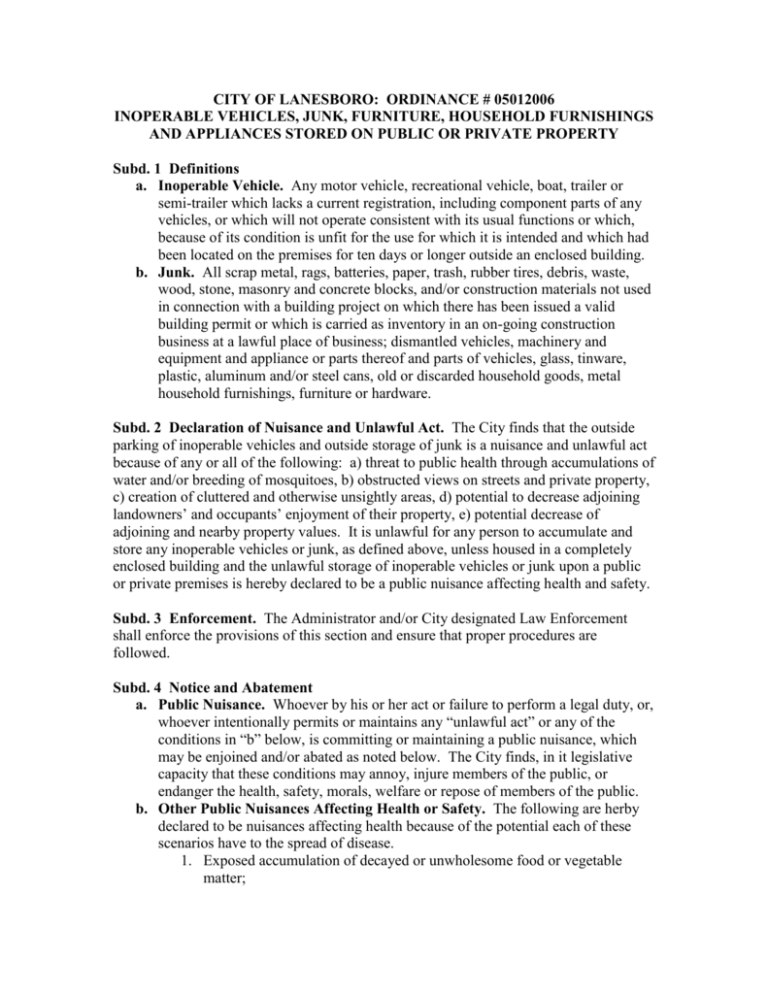
CITY OF LANESBORO: ORDINANCE # 05012006 INOPERABLE VEHICLES, JUNK, FURNITURE, HOUSEHOLD FURNISHINGS AND APPLIANCES STORED ON PUBLIC OR PRIVATE PROPERTY Subd. 1 Definitions a. Inoperable Vehicle. Any motor vehicle, recreational vehicle, boat, trailer or semi-trailer which lacks a current registration, including component parts of any vehicles, or which will not operate consistent with its usual functions or which, because of its condition is unfit for the use for which it is intended and which had been located on the premises for ten days or longer outside an enclosed building. b. Junk. All scrap metal, rags, batteries, paper, trash, rubber tires, debris, waste, wood, stone, masonry and concrete blocks, and/or construction materials not used in connection with a building project on which there has been issued a valid building permit or which is carried as inventory in an on-going construction business at a lawful place of business; dismantled vehicles, machinery and equipment and appliance or parts thereof and parts of vehicles, glass, tinware, plastic, aluminum and/or steel cans, old or discarded household goods, metal household furnishings, furniture or hardware. Subd. 2 Declaration of Nuisance and Unlawful Act. The City finds that the outside parking of inoperable vehicles and outside storage of junk is a nuisance and unlawful act because of any or all of the following: a) threat to public health through accumulations of water and/or breeding of mosquitoes, b) obstructed views on streets and private property, c) creation of cluttered and otherwise unsightly areas, d) potential to decrease adjoining landowners’ and occupants’ enjoyment of their property, e) potential decrease of adjoining and nearby property values. It is unlawful for any person to accumulate and store any inoperable vehicles or junk, as defined above, unless housed in a completely enclosed building and the unlawful storage of inoperable vehicles or junk upon a public or private premises is hereby declared to be a public nuisance affecting health and safety. Subd. 3 Enforcement. The Administrator and/or City designated Law Enforcement shall enforce the provisions of this section and ensure that proper procedures are followed. Subd. 4 Notice and Abatement a. Public Nuisance. Whoever by his or her act or failure to perform a legal duty, or, whoever intentionally permits or maintains any “unlawful act” or any of the conditions in “b” below, is committing or maintaining a public nuisance, which may be enjoined and/or abated as noted below. The City finds, in it legislative capacity that these conditions may annoy, injure members of the public, or endanger the health, safety, morals, welfare or repose of members of the public. b. Other Public Nuisances Affecting Health or Safety. The following are herby declared to be nuisances affecting health because of the potential each of these scenarios have to the spread of disease. 1. Exposed accumulation of decayed or unwholesome food or vegetable matter; 2. All diseased animals running at large; 3. All ponds or pools of stagnant water, unless part of an erosion control program or part of a subdivision plan; 4. Carcasses of animals not buried or destroyed within 24 hours after death; 5. Accumulations of manure, refuse, junk or other debris, including inoperable vehicles or tires where water may accumulate, thus increasing the potential for mosquito breeding; 6. Vaults or garbage can which are not rodent-free or fly-tight or which are so maintained as to constitute a health hazard or to emit foul and disagreeable odors. 7. The pollution of any public well or cistern, stream or lake, canal or body of water by sewage, industrial waste or other substances; 8. All noxious weeds and other rank growths of vegetation upon public or private property; 9. Dense smoke, noxious fumes or gas. c. Whenever a public officer or other person charged with enforcement determines that a public nuisance may be maintained or exists on premises in the city, the city enforcement officer investigate the scene. If it appears a nuisance may exist, the officer or a designee shall notify, in writing, the owner or occupant of the premises of the fact and request that the nuisance be terminated and abated. d. The notice shall be served in person or by certified or registered mail to the owner of record and the occupant of the property, if known. If the premises are not occupied and the owner is unknown, the notice may be served by posting it on the premises. The notice shall specify the steps to be taken to abate the nuisance and the time, not exceeding ten days, within which the nuisance is to be abated. The notice shall also indicate that there shall be a hearing set before the City Council to review the situation and to allow the Respondent(s) to contest the claim that a nuisance exists. The Respondent shall be notified of the time and place of the hearing. The Council will learn at the hearing whether the Respondent has remedied the alleged nuisance. The Council will review the evidence as to the status of the property and make findings as to whether, in its opinion, a nuisance exists. A finding that a nuisance exists shall be made based upon clear and convincing evidence, and any findings shall be by a majority of the members of the City Council A copy of the written finding shall be mailed to the owner of record and occupant of the property by certified mail. If a nuisance is found to exist by the City Council, the City shall be and hereby is authorized to abate the nuisance. e. If an emergency exists that presents an immediate danger to citizens affecting their safety, the officer shall require immediate abatement of the nuisance. The notice shall explain why there is an immediate danger. If the notice is not complied with within the time specified, the enforcing officer shall report that fact forthwith to the Council and may take such other appropriate action as may be necessary. The Council may, after notice to the owner or occupant, and a hearing before the City Council, provide for the abating of the nuisance by the City. Subd. 5 Recovery of cost. The owner of the premises on which a nuisance has been abated by the City shall be personally liable for the cost to the city of the abatement, including, but not limited to, administrative costs. As soon as the work has been completed and cost determined, the City Administrator shall prepare a bill for the cost and mail it to the owner. Thereupon, the amount shall be immediately due and payable to the City Clerk/Treasurer. Subd. 6 Assessment. If the cost of abating the nuisance in not paid in full to the City Clerk by the following September 1, the City Clerk shall list the total unpaid charges along with the other charges, as well as other charges for current services to be assessed under M.S. 429.101, as it may be amended from time to time, against each separate lot or parcel o which charges are attributable. The Council may then spread the charges against the property under that statute and other pertinent statutes for certification to the County Auditor and collection along with current taxes the following year or in annual installments, not exceeding ten, as the Council may determine in each case. Bobbie Torgerson City Administrator/Clerk City of Lanesboro

